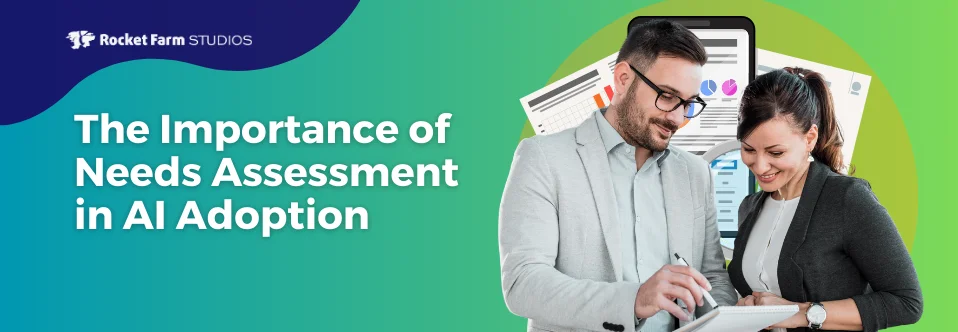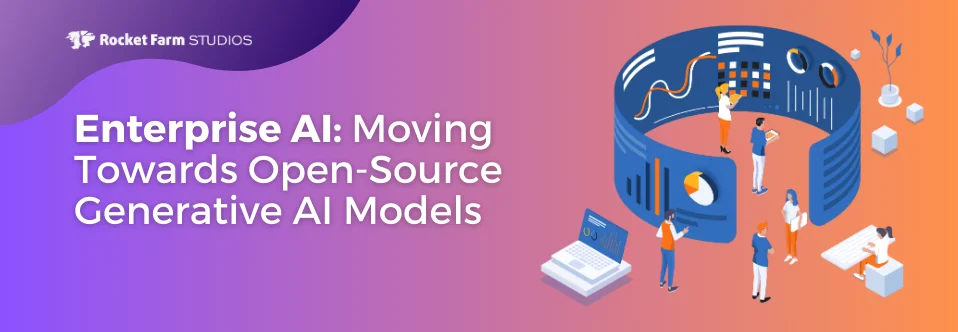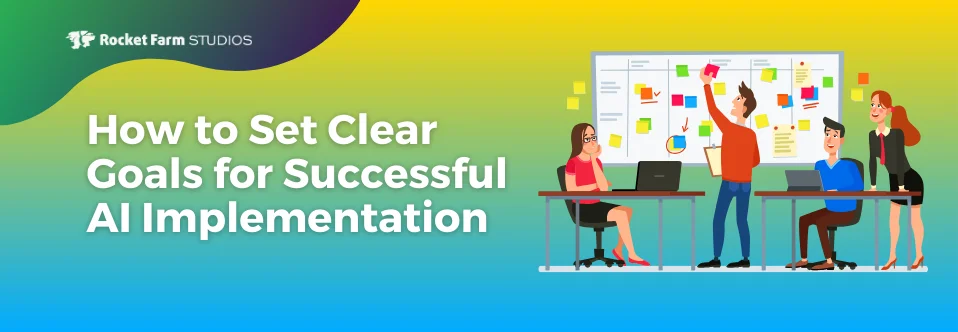A significant 50% of companies have now embraced artificial intelligence (AI) within at least one segment of their business operations, as revealed by a recent McKinsey survey. This statistic signals a strong trend towards the digitization and automation of business processes through advanced technology.
However, the same report also sheds light on a substantial challenge: a large number of these organizations find themselves grappling with the scalability of their AI projects or struggling to realize meaningful financial returns from these investments.
Often, the roots of these challenges trace back to the initial phases of AI integration. Specifically, the difficulties emerge from a crucial yet frequently overlooked phase—the needs assessment. This phase is pivotal because it lays the groundwork for aligning AI capabilities with strategic business goals, yet it is often bypassed or inadequately performed, leading to suboptimal outcomes and inefficiencies in the application of AI solutions.
This oversight in the preparatory stages can create a cascading effect, undermining the potential benefits AI is poised to offer.
Understanding the Role of Needs Assessment in AI
The concept of needs assessment in AI is more than a preliminary step; it is the cornerstone of successful AI integration. It determines not just the potential of AI within a company, but directs its application to ensure that the technology addresses specific, strategic business needs.
Without a thorough needs assessment, AI projects are significantly more prone to failure due to misalignment with business objectives or inadequate infrastructure support.
Delving into the Needs Assessment Process
A robust needs assessment for AI adoption involves a nuanced, multi-dimensional approach, essential for tailoring AI solutions that are not only effective but also sustainable and scalable:
1. Identifying Business Objectives
The initial step in the needs assessment process is to clearly define what the organization hopes to achieve through AI integration. Objectives can vary widely, including enhancing operational efficiency, boosting sales, reducing operational costs, improving customer satisfaction, or innovating product offerings. Establishing clear, specific, and measurable goals at this stage is crucial as it directs the strategic planning and focus of AI initiatives.
It also provides a benchmark against which the success of AI integration can be measured, ensuring that the technology delivers real value to the business.
2. Evaluating Existing Infrastructure
To effectively integrate AI, a critical analysis of the existing technological framework is vital. This evaluation encompasses a thorough review of the current IT infrastructure, data management systems, software, hardware, and network capabilities.
The goal is to assess the organization’s readiness to support advanced AI technologies and to identify any critical gaps or areas needing enhancement. This might include upgrades to hardware for better data processing capabilities or enhancements to software systems to support AI algorithms.
Understanding these elements ensures that the AI solutions implemented are compatible with existing technologies and can be supported with minimal disruption.
3. Understanding Stakeholder Needs
AI implementation affects various stakeholders within the organization, from IT personnel to frontline employees, management, and even customers. Engaging with these stakeholders to gather insights about their daily operations, challenges, and expectations is critical. This engagement can take the form of interviews, surveys, or workshops.
The information gathered is invaluable in designing AI systems that address real-world challenges, enhance user experience, and are readily adopted by end-users. Moreover, this step helps in aligning the AI strategy with the needs and culture of the organization, increasing the likelihood of successful adoption.
4. Assessing Skills and Resources
The deployment and ongoing management of AI systems require specific technical skills and expertise. This stage involves an assessment of the current workforce’s capabilities to manage and utilize AI technologies effectively.
If gaps are identified, the organization might consider options such as training existing staff, hiring new talent, or partnering with external AI experts. This ensures that the organization not only has the technology to support AI but also the human capital to optimize its use.
5. Risk Analysis
The integration of AI into business processes brings with it a host of risks—ethical considerations, data privacy issues, potential biases in AI algorithms, and security vulnerabilities. Conducting a comprehensive risk analysis is crucial. This analysis should identify potential risks, evaluate their impact, and develop strategies to mitigate them.
Effective risk management not only protects the organization against potential legal and regulatory repercussions but also builds trust among users and stakeholders, ensuring that AI solutions are both ethical and secure.
Practical Applications of AI
The practical application of AI in different sectors provides compelling evidence of the critical role of needs assessment in ensuring successful adoption. For example, the global retail giant, Walmart, has leveraged AI to enhance its marketing strategies significantly. The company embarked on this AI journey only after a thorough analysis of its extensive customer data and a clear delineation of its marketing goals. This preparatory work enabled Walmart to deploy AI solutions that not only personalized customer interactions at scale but also optimized inventory management across its stores.
In another instance, Siemens, a leading player in the industrial manufacturing sector, has successfully implemented AI to perform predictive maintenance. This move came after Siemens conducted a detailed examination of its historical maintenance data and analyzed patterns of equipment failures. By identifying the most common failure points and operational inefficiencies, Siemens was able to use AI to predict equipment malfunctions before they occurred, substantially reducing downtime and maintenance costs.
These examples from Walmart and Siemens illustrate how a meticulously conducted needs assessment is indispensable for tailoring AI solutions to specific business needs and operational contexts. Such an approach not only maximizes the efficacy of AI deployments but also ensures they deliver strategic advantages and operational improvements aligned with business objectives.
The Imperative of Continuous Evaluation
AI technologies and business environments are in a state of constant flux, driven by rapid advancements in technology and shifts in market dynamics. As a result, the needs assessment process should not be perceived merely as a preliminary step in AI adoption but rather as a continual cycle of evaluation and adaptation. This dynamic approach to needs assessment is essential for several reasons:
1. Adapting to Technological Advancements
With new developments in AI, such as advancements in natural language processing or machine learning algorithms, businesses have opportunities to enhance their operations. Regularly reviewing and updating the technology stack in response to these advancements allows companies to leverage cutting-edge capabilities and maintain a competitive edge.
2. Responding to Market Changes
Changes in consumer behavior or shifts in the economic landscape can affect the relevance and effectiveness of existing AI solutions. Ongoing needs assessment allows businesses to adjust their AI strategies to align with current market conditions, ensuring that AI applications are always attuned to the latest market demands.
3. Enhancing AI Solution Alignment
As business goals evolve, the initial AI implementations may no longer fully align with the company’s strategic direction. Continuously reevaluating business objectives and AI outcomes ensures that AI solutions consistently support the most current business priorities and deliver maximum value.
4. Scaling AI Initiatives
An organization may start with AI in a limited capacity, such as automating customer service interactions, and plan to expand its use into more complex areas like predictive analytics for business forecasting. Regular updates to the needs assessment process can guide the scaling of AI initiatives, helping to identify new areas for AI integration and ensuring readiness for broader deployment.
5. Managing Risks and Opportunities
As AI systems scale, new risks such as data privacy concerns, ethical issues, and compliance with regulations can emerge. Continuous evaluation includes reassessing these risks and opportunities, adjusting governance frameworks, and implementing new security measures as necessary to mitigate risks while capitalizing on new opportunities.
6. Promoting Stakeholder Engagement and Feedback
Continuous interaction with stakeholders can reveal insights about the usability and effectiveness of AI tools in everyday operations. Establishing regular feedback loops with stakeholders, including surveys and interviews, can help refine AI tools to better meet user needs and enhance overall satisfaction.
Final Thoughts
This blog underscores the essential role of needs assessment in ensuring the successful adoption and scalability of AI technologies in business. A detailed needs assessment helps align AI capabilities with strategic goals, thereby optimizing both financial outcomes and operational efficiencies.
This involves not only identifying clear business objectives and evaluating existing infrastructure but also engaging with stakeholders and assessing necessary skills and resources. Continuous evaluation, as highlighted, is critical in adapting to rapid technological advancements and changing market conditions.
For businesses embarking on their AI journey, understanding the depth of needs assessment can be transformative, offering a clearer path to integrating AI solutions that are both effective and aligned with long-term objectives.
For those who might find this process daunting or are looking for expert guidance, Rocket Farm Studios is ready to assist.
We can help fine-tune this process, ensuring your AI strategies are robust and responsive to the evolving digital landscape. Whether you’re just starting out or looking to enhance existing AI capabilities, we’re here to support your journey towards successful AI adoption.









